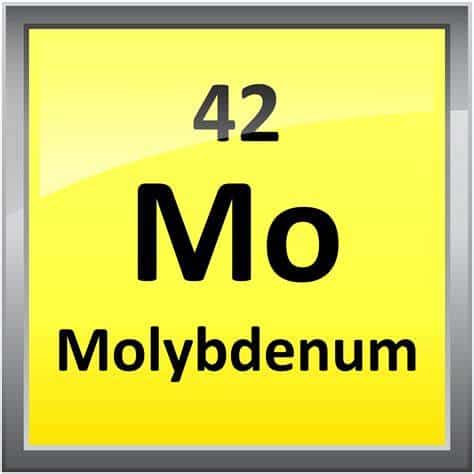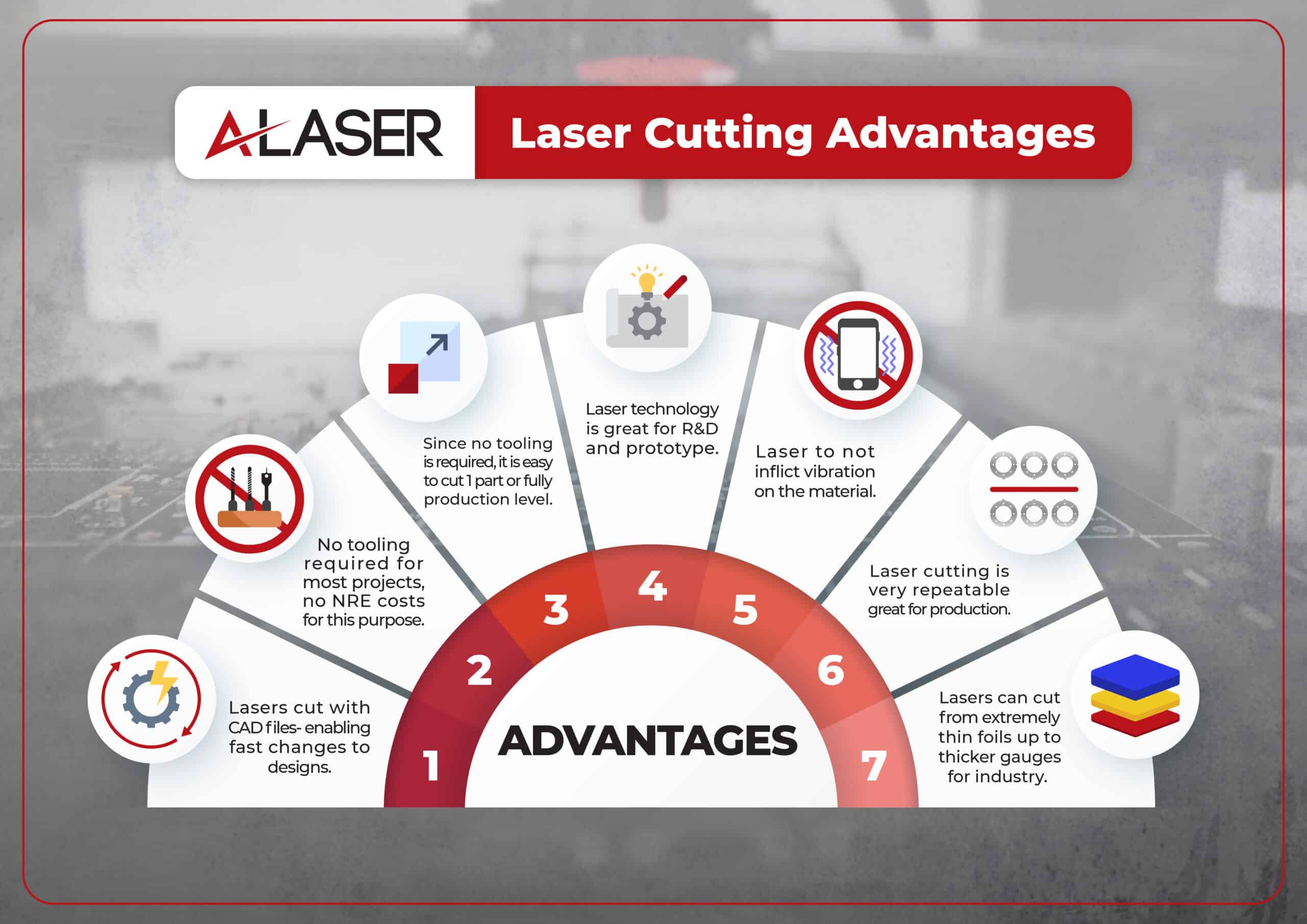Laser Cut Molybdenum
Being listed at 54th place as the most common element in Earth’s crust, doesn’t really tell the story of molybdenum. Its grayish silvery color is probably not going to stand out and possibly be mistaken as tungsten or titanium. So, what’s the appeal to this element which has an atomic number of 42? It’s extracted from molybdenite and has the keen ability to add characteristics of strength, high temperature tolerance, corrosion resistance, and machinability to other elements. Most people probably don’t know that it increases the hardness of steel and iron and that is added in part to fertilizer for some vegetables. Medically, it is an essential trace mineral found in some vegetables, grains, milk, cheese and helps prevent the build up of sulfites and other toxins in the body. Molybdenum gains more recognition and acclaim in industry uses. Because of the characteristics it has, it can be found to be used for airplane and missile parts, as high heating elements, as a solid lubricant, and for pigments such as chrome and cadmium yellow. The uses are numerous and manufacturers using molybdenum alloy need a method to cut it.

Tips to Cut Molybdenum
The following tips are for your consideration and reference when using molybdenum in your projects:
- What grade of molybdenum: The grade and thickness must be considered. Since molybdenum sheet metal is a hard and durable alloy, it can wear down cutting tools. Common varieties are:
- TZM- A combination of titanium, zirconium, and molybdenum. This grade is called the primary alloy for molybdenum. It is chosen for its high strength and ability to withstand temperatures over 1300°C. It also exhibits the ability to be welded. You will find examples of this used for fuel cells, x-ray tube anodes, rocket nozzles, jet engines parts.
- MoW- Molybdenum and tungsten. This grade is used for its corrosion resistance and for its strength. You will see examples of this as glass stirrers, for use as sputtering targets in coating applications and for zinc related processes.
-
- MoRe or Molybdenum-Rhenium, used for projects that require strength but also being ductile. Thin foils can be produced that need strength, but also may need to be welded. Examples such as dental posts, cardiac stents, devices to treat orthopedic and spinal issues, electron tube components and heat sinks.
- Power needed: While thin molybdenum foils can be cut by lower powered methods, thicker sheets or plates will need higher power to cut through.
- Speed of the cutting: Slower speeds in general will give excellent results, but time can add cost. A faster speed will lower costs but can result in lower quality to the cut. A balance is needed for optimum results.
- Post Finishing: Many molybdenum precision parts, like other metallics, require a post finishing process. This is specific to the project’s requirements and considers the use of and the environment the completed part will be subjected to. Some methods used are sanding, polishing, plating, and electropolishing.
Methods of Cutting Molybdenum
- Laser Cut Molybdenum- Sheets of molybdenum are cut precisely and with great repeatability by laser technology. Thin and ultra-thin foils from 0.0254mm to 0.254mm effectively by ultraviolet laser. Fiber laser technology can cut thicker grades, depending on the wattage of the system used.
- Water jet technology- This is used for many precision cut parts. It does not add heat to the cutting process but can possibly damage very thin foils. It can hold tolerance as tight as +/- 0.0254mm.
- Plasma-This is another good technology for precision cuts of molybdenum and other metallic alloys. It can produce a heat affect zone, similar to laser cutting. Care must be taken to adjust the cutting program accordingly.
4. CNC Technology/Refractory metal machining- Molybdenum falls under this category of a metal alloy which characteristics has superior strength, high thermal threshold, and prolonged resistance to wear. It is machined in a variety of methods. Some of the common ones are sawing, drilling, turning, boring, and tapping. Like other manufacturing methods, knowledge of each system will guide the best approach to having a successful cut.
5.Wire EDM- This method is good for cutting hard metals like molybdenum and provides high accuracy and repeatability.

Benefits of Laser Cutting Molybdenum
Molybdenum is an essential trace mineral found in foods like vegetables, cheese, grains, organic meats, and nuts. It helps break down proteins and keeps toxins and sulfites from building up and causing other medical issues. This use is natural, and it is rare for people to develop a molybdenum deficiency. In an industrial setting, we see molybdenum used in a vast collection of industries because of similar characteristics to other alloys for its strength, high temperature threshold and being ductile. It often is combined in part with other alloys like steel, tungsten, titanium, zirconium, and others. While it can be machined through methods like CNC machining and wire EDM, one method for producing molybdenum precision parts is laser cutting.
Laser cutting technology has grown in use over the past few decades. Laser cut molybdenum is one of the great examples of a material benefiting from technology. Laser cut molybdenum sheets is common to see in process with many service providers with the benefits such as:
- Lasers cut with CAD files- enabling fast changes to designs. The designs of the molybdenum can be changed easily with a new CAD file.
- No tooling required for most projects, no NRE costs for this purpose.
- No wear of the cutting tool- Molybdenum can wear down cutting tools bits and drills over time, but with lasers the cutting apparatus is the beam of intense light.
- Laser technology is great for R&D and prototype and NPI type of work.
- Lasers do not inflict vibration on the material or substrate. Molybdenum can be very expensive. Using laser technology there is no damage inflicted on the raw sheets.
- Laser cutting is a very repeatable process-The automation can reduce costs of labor and loss of time.
- Laser can cut from extremely thin foils up to thicker gauges for industry.
- Laser cutting is accurate and, in many cases, holds a +/- .0125mm to .025mm tolerance.
- Lasers can be adjusted to do surface ablation- in the removal of thinner top layers of a substrate.
The benefits of laser cut molybdenum sheet metal are many and should be considered when the projects requirements are for a sheet or foil. As to all manufacturers and manufacturing methods, no one service or solution will be the best of every project, but regarding laser cutting, it has its benefits, and the final decision should be made with consultation with your preferred service provider.
